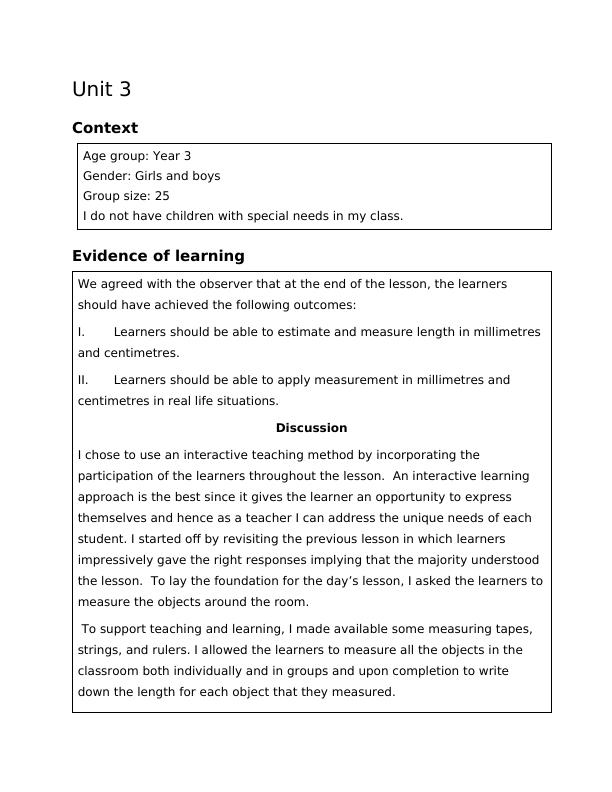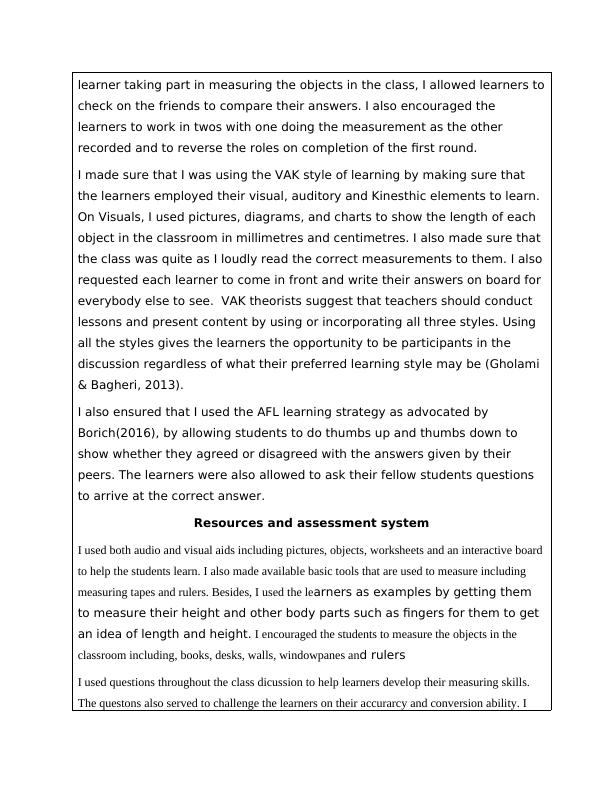Teaching Length Measurement to Year 3 Students: An Interactive Approach
Creating a lesson plan for teaching and learning about estimating and measuring length in millimeters and centimeters. The lesson includes activities for students to measure objects in the classroom and differentiate their learning based on their ability. The lesson plan also includes formative assessments and the use of measuring tape and rulers as learning materials.
Added on 2023-06-10
About This Document
Teaching Length Measurement to Year 3 Students: An Interactive Approach
Creating a lesson plan for teaching and learning about estimating and measuring length in millimeters and centimeters. The lesson includes activities for students to measure objects in the classroom and differentiate their learning based on their ability. The lesson plan also includes formative assessments and the use of measuring tape and rulers as learning materials.
Added on 2023-06-10
End of preview
Want to access all the pages? Upload your documents or become a member.



